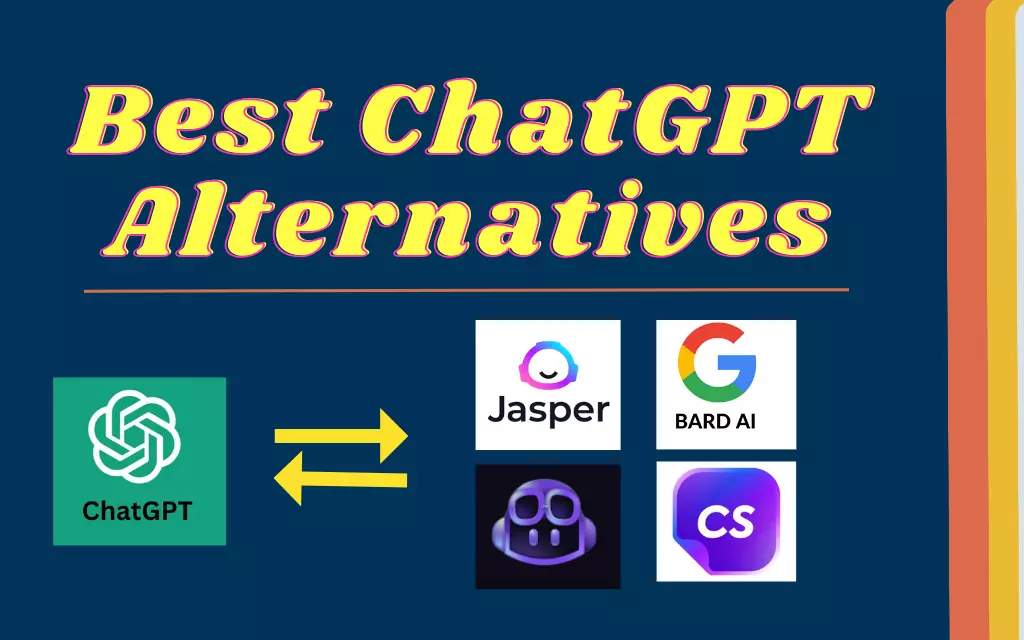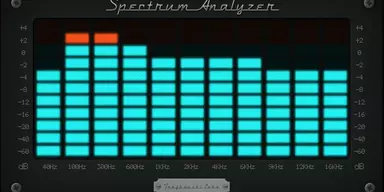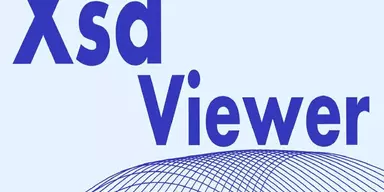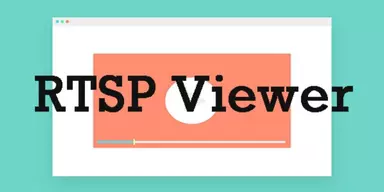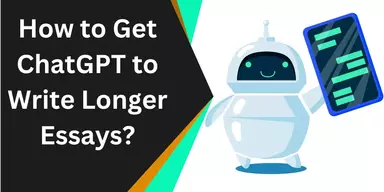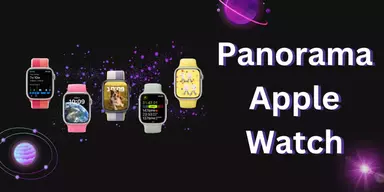In November of 2022, OpenAIunveiled its Artificial Intelligence (AI) chatbotcalled ChatGPT. The term “ChatGPT” is a portmanteau of the words “chat” (for its chatbot features) and “GPT” (for its generative pre-trained transformer), a subset of the Larger Learning Model (LLM) family. Based on OpenAI’s original GPT models specifically GPT-3.5 and GPT-4, ChatGPT applies a blend of supervised and reinforcement learning to improve its performance in conversational settings.
On November 30, 2022, a prototypeversion of ChatGPT was released, and its thorough and eloquent replies across several areas of expertise quickly received notice.
ChatGPT’s sophisticated features open the door for more natural and interesting interactions with AI-driven technologies. However, in the quickly developing field of AI technology, many ChatGPT substitutes have developed, providing consumers with a wealth of possibilities to investigate. Sites like ChatGPT point to other platforms and services that provide comparable features and enable users to have dynamic, thought-provoking chats with chatbots that AI drives. Websites like ChatGPT are designed to provide consumers with a wide range of possibilities for investigating and using Natural Language Processing (NLP) capabilities across several fields.
In this article, we’ll look at some of the best ChatGPT alternatives available today, both free and premium. To assist readers in making selections that are best for them, we will examine these options and emphasize their features, advantages, and downsides.
Due to its capacity to provide coherent and contextually appropriate solutions to user inquiries, ChatGPT, based on the GPT-3.5 design, has achieved massive popularity. It’s deep learning algorithms that make better interactions between people and robots possible, enabling them to comprehend and interpret natural language. The importance and reach of ChatGPT must be grasped before exploring its alternatives can begin.
ChatGPT’s usefulness and impact are widespread. Companies use ChatGPT to improve customer service by deploying intelligent chatbots to respond to consumer questions and concerns and even help them make purchases. ChatGPT is also helpful for programmers since it lets them test out conversational AI prototypes.
This article presents a comprehensive list of the 20 top ChatGPT replacements in 2023, splitting them into free and paid categories. This post will serve as a guide to the best alternatives to ChatGPT in 2023, whether you’re a developer searching for a robust chatbot framework or a person looking for an AI-powered chat buddy. We’ll go through each choice’s features, benefits, and drawbacks so that you can have a better sense of the landscape and choose the best one for your needs.
1. Google Bard AI
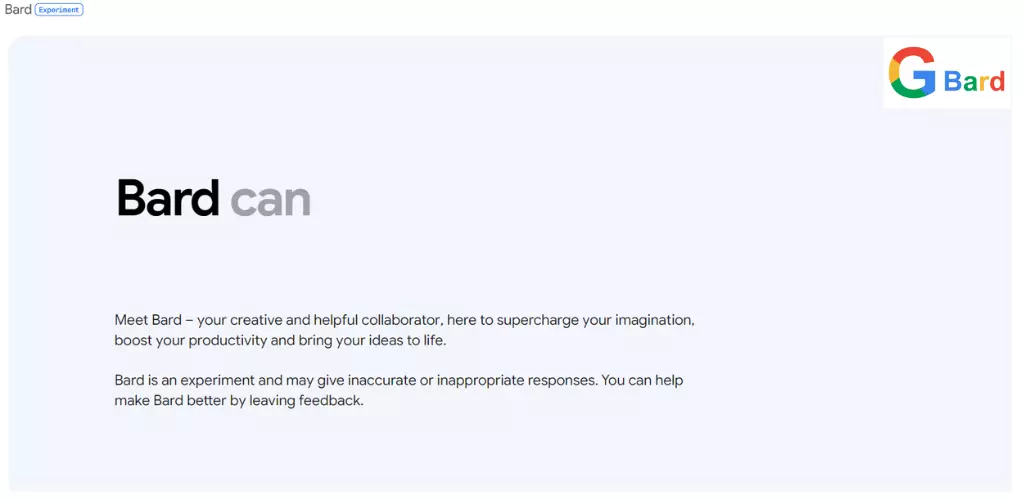
The Google Bard AI language model is a cutting-edge site like ChatGPT. Poetry and other forms of creative writing are its forte. Bard AI is programmed to comprehend human poetry’s intricacies and emulate those styles. Bard AI can produce new poems in various poetic genres, including sonnets, haikus, and free verse. This AI model allows users to delve further into the poetic arts and acts as a wellspring of ideas for aspiring poets and those who like the form.
Pros:
- Built by Google, it has cutting-edge AI features.
- Poetry and other creative writing may be generated.
- The produced text’s tone and style may be adjusted at your discretion.
- Flexible enough to be utilized either as a solo program or as a component of others.
Cons:
- They are intended primarily for poem generation, which restricts their applicability.
- Can only provide the intended results when given explicit directions.
- You can’t alter anything save the general tone and style.
- It’s possible that it won’t be as adaptable as other chatbot options.
2. Microsoft Bing

Microsoft Microsoft’s Bing is a popular search engine. Despite Bing’s popularity as a search engine, the company also provides many other useful tools and services. It returns search results that include webpages, photos, videos, and news articles. The interface of Bing has been developed to be both user-friendly and aesthetically pleasing. It also has navigation tools (Bing Maps), a search engine (Bing Shopping), and an ad platform (Bing Ads). The techniques and methods used to rank search results in Bing are designed to provide users with useful information.
Pros:
- Strong search engine with many different search options.
- It provides a simple navigation structure and a natural way to conduct searches.
- Includes material like photographs and videos in search results.
- Work more efficiently with other Microsoft products and services thanks to tight integration.
Cons:
- It may not have as comprehensive a database as other search engines.
- Advertisements and sponsored content may influence search results.
- Some users may gravitate toward specialized search engines.
- Not much room to tweak your search settings the way you want them.
3. Perplexity AI
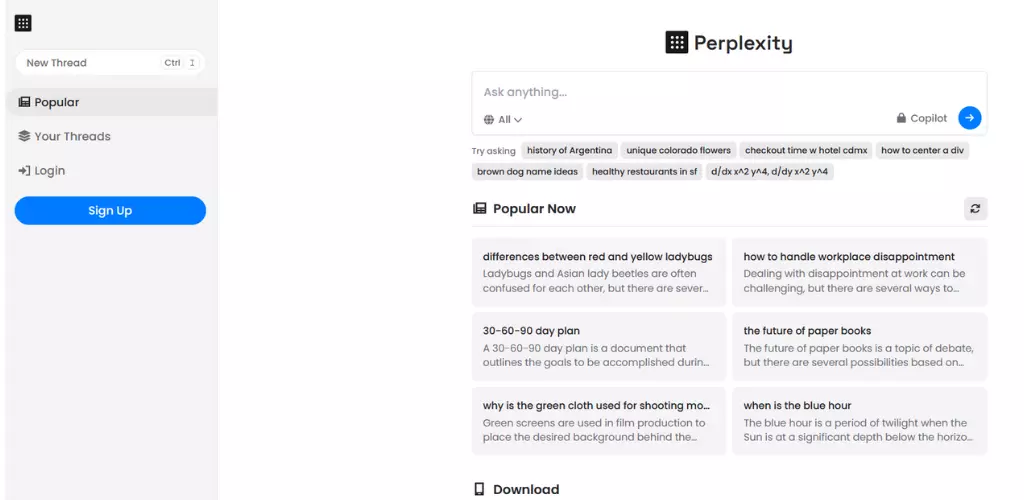
An emerging field of AI, perplexity AI builds language models to generate coherent and contextually appropriate text and replies. Perplexity AI is considered one of the best sites like ChatGPT. The model aims to improve the quality of produced text by making language creation less complicated, which should lead to more logical and insightful replies. It can comprehend and create natural-sounding text using deep learning algorithms and sophisticated NLP methods. The massive amounts of data used to train Perplexity AI to ensure that its generated replies are consistent with the informal environment.
Pros:
- A sophisticated AI language model that focuses on producing content appropriate to its context.
- It can be used for various tasks like chatbots, content creation, and language comprehension.
- Offers a simple API for simple integration into current systems.
- Pre-trained models and the possibility to fine-tune for certain use cases are available.
Cons:
- Technical competence and understanding are needed for proper use.
- Non-technical users have a restricted user interface or platform-specific utilities.
- There might be limitations on how much an API can be used for and associated costs.
- It’s possible that it won’t be as conversationally adept as some other options.
4. Jasper Chat
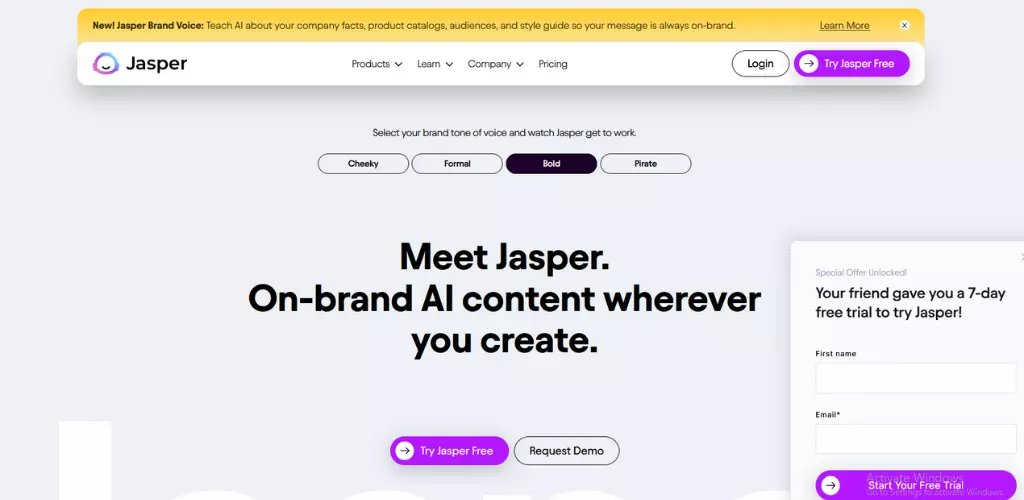
There’s Jasper Chat, a chatbot platform driven by artificial intelligence for companies looking for conversational solutions. Its main goal is to provide consumers with interesting and unique experiences. Jasper Chat uses NLP and ML methods to interpret user intent and give appropriate answers. The platform provides tools for modifying and managing chatbots, integrating them with existing messaging systems, and collecting and analyzing data about their users. It provides a user-friendly and adaptable chatbot interface to enhance client experiences and streamline communication. Businesses may streamline their informal processes like customer service and lead creation with the help of Jasper Chat.
Pros:
- A conversational bot powered by AI with the ability to interpret and use natural language.
- Emphasises one-on-one interaction with and help for each client.
- Assists in different channels, such as websites, mobile apps, and text messages.
- It helps you track and analyze chatbot data for better results.
Cons:
- Depending on the plan or bundle, prices, and availability may change.
- Possible technical expertise is needed for customization choices.
- Some systems and platforms may need more work to integrate with.
- It’s possible that ongoing practice and tweaking are needed to guarantee reliable results.
5. Chatsonic
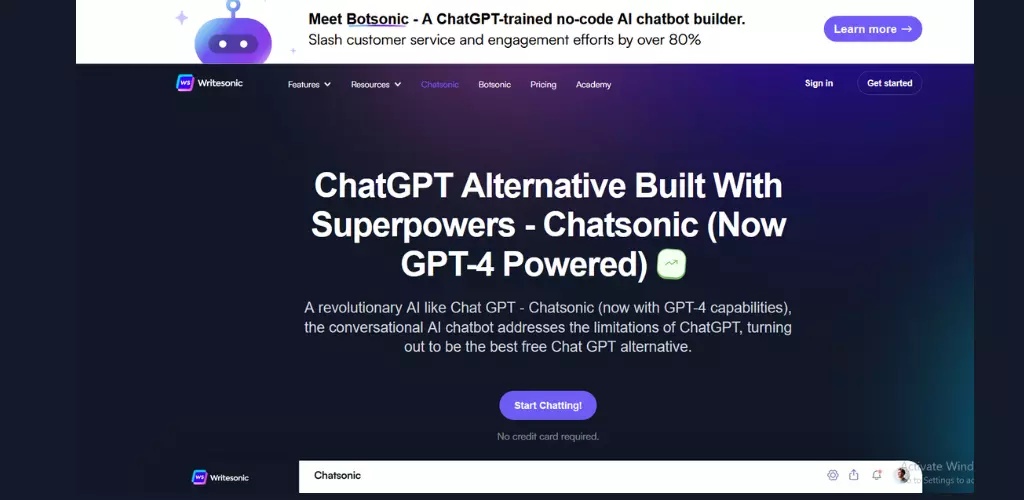
Chatsonic is a business-focused chatbot powered by artificial intelligence. Natural language processing, emotion analysis, and awareness of the surrounding context are just some of the features at your disposal. Chatsonic is a flexible option for organizations looking to automate client interactions since it can be combined with different messaging platforms and customer care systems.
Pros:
- Powerful capabilities in the area of natural language processing.
- Supports a wide range of popular chat apps without any hassle.
- Gives answers that are relevant to the user and their situation.
- Conversations with many speakers are possible.
Cons:
- Access and availability are restricted.
- It might take some time to become used to all of its features.
- There may be problems with precision and comprehending elaborate requests.
- Prices and licensing conditions are subject to change.
6. Mitsuku
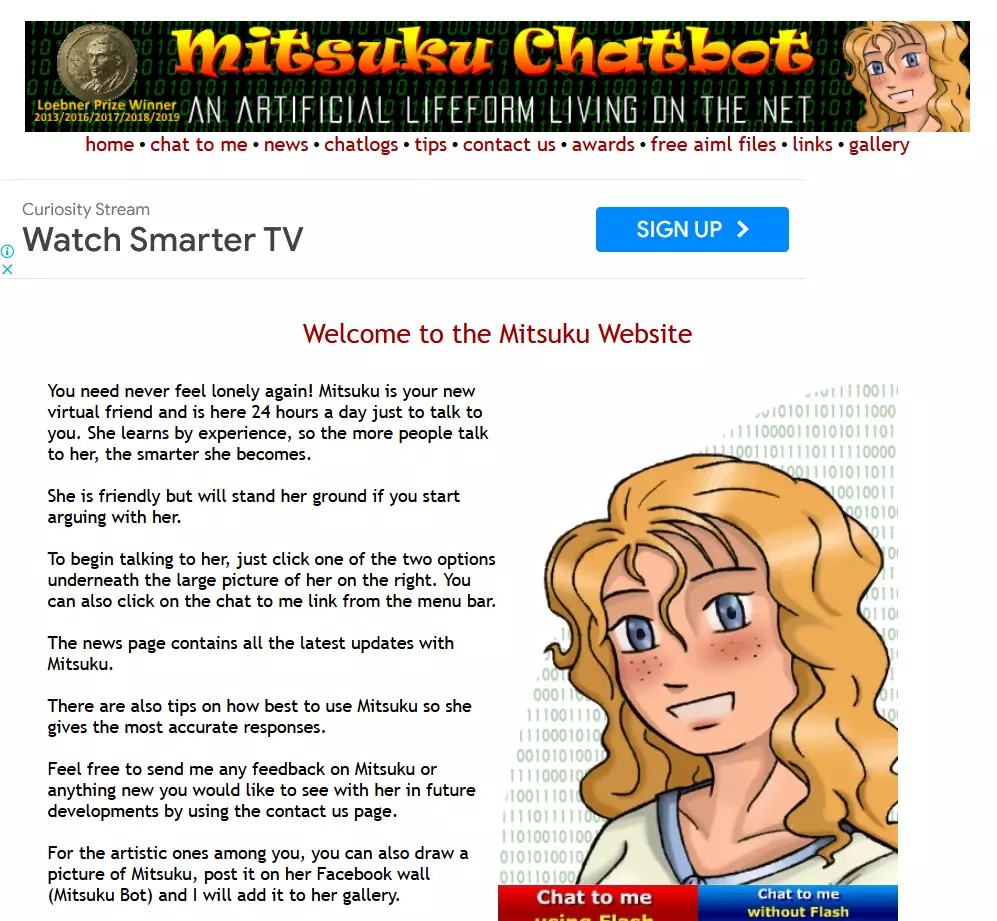
Mitsuku, created by Pandorabots, is a prominent chatbot known for its natural conversational abilities and several awards. Mitsuku can comprehend and reply to user inquiries in a conversational way because of its sophisticated natural language processing capabilities. In 2023, Mitsuku has a standout choice on websites like ChatGPT because it provides an everyday experience similar to that of a person.
Mitsuku excels because it gives users a pleasant and engaging chatbot experience. As a result of its broad conversational capabilities, it serves as a convenient option for customers looking for both amusement and education. Mitsuku provides a top-notch chatbot experience, whether you’re looking to talk about the news, test your knowledge with trivia questions, or have a casual discussion.
Pros:
- Conversational chatbot that has won awards for how human-like it is.
- It gives users the feeling of interacting with a real person.
- Versatile in the subjects with which one may engage.
- New features and enhancements are added regularly.
Cons:
- There are few opportunities for personalization for coders.
- Sometimes gives answers that don’t make sense or are wrong.
- Limitations to the free version’s functionality exist.
- Connectivity to the internet is required for use.
7. Pi, Your AI
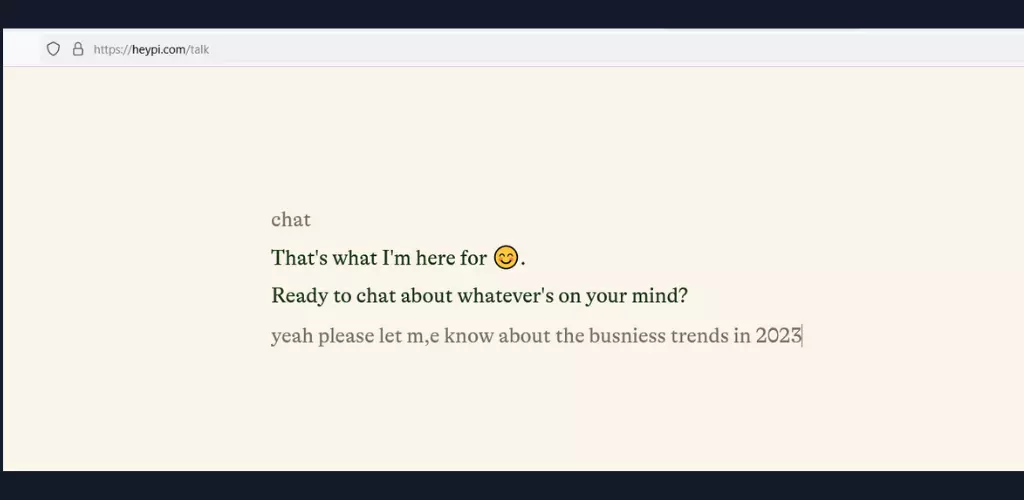
An artificial intelligence assistant, Pi is meant to be a constant companion. Pi can help with things like answering questions, remembering appointments, and creating reminders. Some of its services include voice recognition, NLP, and individualized suggestions. Pi’s machine-learning features allow it to adapt to its user’s preferences and deliver better service over time. It hopes to save time and effort in everyday life by serving as a digital assistant.
Pros:
- It is geared at customizing interactions for each user.
- A variety of conversational features and interesting interactions are available.
- Accessible on a wide variety of computing systems and gadgets.
- Privacy and security of user information are prioritized.
Cons:
- Restricted access or limited availability.
- Certain cutting-edge AI features may be missing.
- Difficulties may arise in correctly answering more subtle or difficult questions.
- Note that the interface and user experience may change.
8. Amazon Codewhisperer
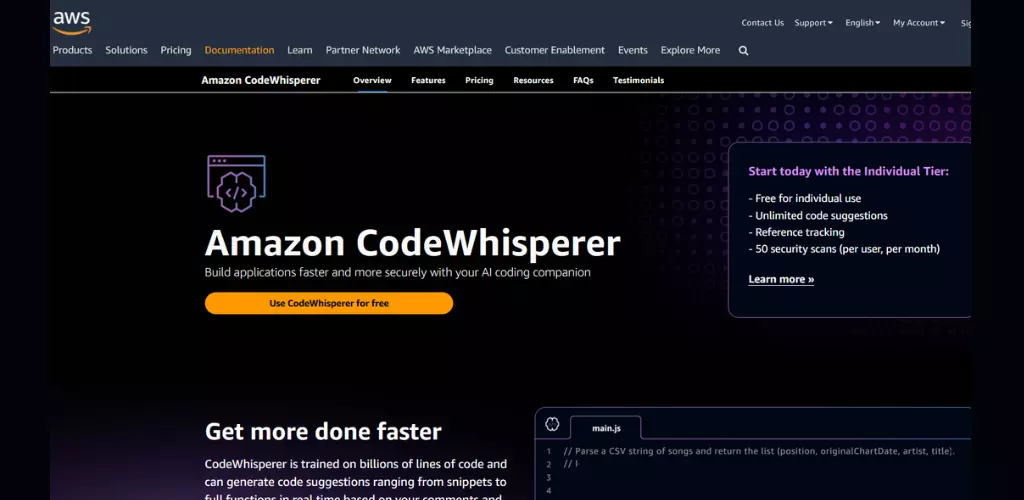
One example of an alternative or website like ChatGPT that provides strong AI-driven chatbot capabilities with an emphasis on code-related questions and support is Amazon CodeWhisperer. Amazon has created a programming aid called CodeWhisperer that uses artificial intelligence. It provides contextual recommendations and automatic code creation to aid developers as they write code. CodeWhisperer can comprehend source code, various programming languages, and various IDEs thanks to its usage of NLP and ML methods. It aims to simplify coding by automating tedious tasks, boosting code quality, and spreading best practices.
Pros:
- AI-powered coding help and recommendations were provided.
- Compatible with the AWS (Amazon Web Services) environment.
- Provides some tools for enhancing and optimizing existing code.
- It can be programmed in a variety of languages.
Cons:
- Access and availability are restricted.
- Optimal use necessitates a learning curve and some adjusting on your part.
- Concerns about the quality and applicability of suggested code.
- Prices and licensing conditions are subject to change.
9. GitHub Copilot X

GitHub created the AI-powered code completion tool Copilot X. It uses models trained by machine learning to provide recommendations to code while it is being written. Code snippets may be generated, function calls can be completed, and full code blocks can be suggested depending on context. Copilot X is an effective solution for increasing developer efficiency since it can be seamlessly integrated into existing code editors and works with various languages.
Pros:
- Code hints and snippets are generated using machine learning.
- It helps developers work faster and more efficiently.
- Compatible with most mainstream IDEs and code editors.
- Adapts over time based on what its users have said.
Cons:
- Code completion is not guaranteed to be perfect.
- It can be restrictive due to reliance on established frameworks and templates.
- Possible worries about intellectual property and code copying.
- Poor linguistic and subject-matter assistance.
10. Chatbot.com
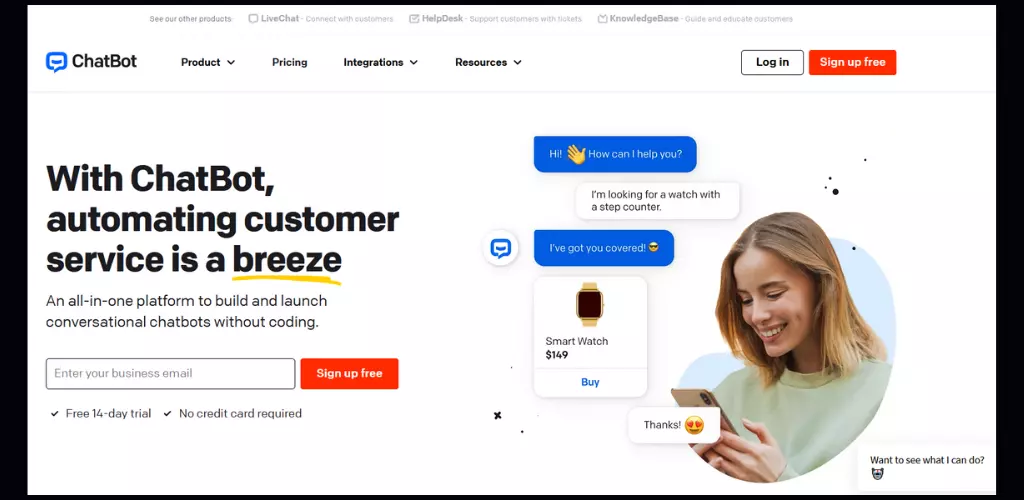
Chatbot.com is a simple platform that allows anybody to create a chatbot without learning to code. Chatbot.com’s drag-and-drop builder makes creating and deploying a chatbot easy, thanks to its user-friendly UI.
The platform can be tailored to the demands of individual users thanks to its flexible design. Chatbot.com provides various tools and templates to help you create a chatbot for various purposes, including customer service, lead generation, and e-commerce. The platform allows customers to connect with their target audience via various messaging connections.
Pros:
- No coding experience is necessary, and user-friendly UI for bot creation.
- It provides access to a robust artificial intelligence chatbot generator.
- Integrations with well-liked chat apps are supported.
- Features for reporting and analytics are included.
Cons
- Less adaptability than custom-coded chatbots
- Premium accounts may be required for access to advanced functionality.
- Possible insufficiency in more complex natural language processing features.
- It relies on the reliability and speed of the platform
11. DialoGPT
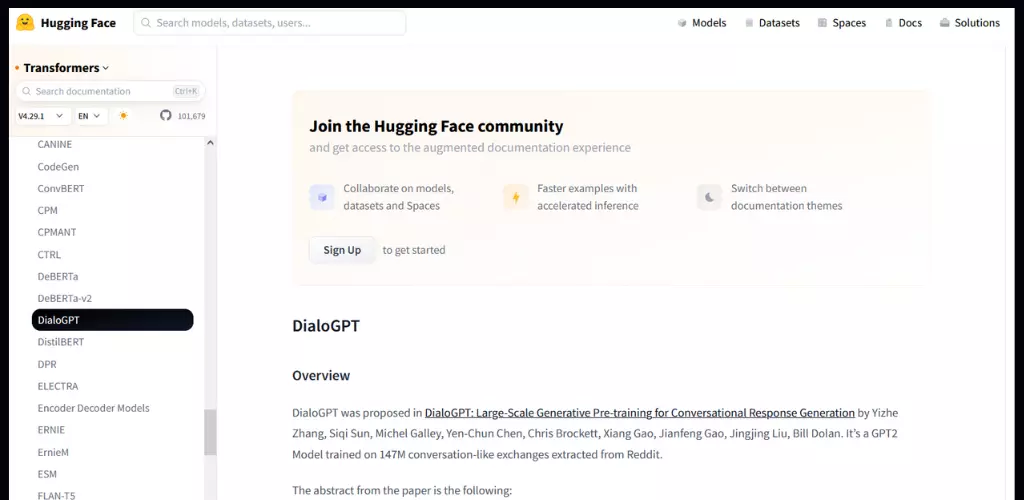
DialoGPT is OpenAI’s proprietary language model. Its primary purpose is to provide realistic conversational replies. DialoGPT’s sophisticated natural language processing means it can have intelligible conversations. When looking at websites like ChatGPT, DialoGPT stands out as a strong alternative. It is capable of understanding its surroundings and responding appropriately. DialoGPT’s extensive internet-text-based training enables it to provide articulate and nuanced replies. It may improve chatbot and virtual assistant functionality and the user experience.
Pros:
- The cutting-edge language-modeling team at OpenAI created it.
- He gives excellent replies and has interesting discussions.
- Capable of writing that makes sense and fits the given situation.
- Provides a straightforward means of engaging with the model.
Cons:
- Possible inaccuracies or absurd outcomes.
- You can’t tweak the results as much as you’d want.
- The model may only be accessed online.
- Possible bias in the results obtained.
12. OpenAI Playground
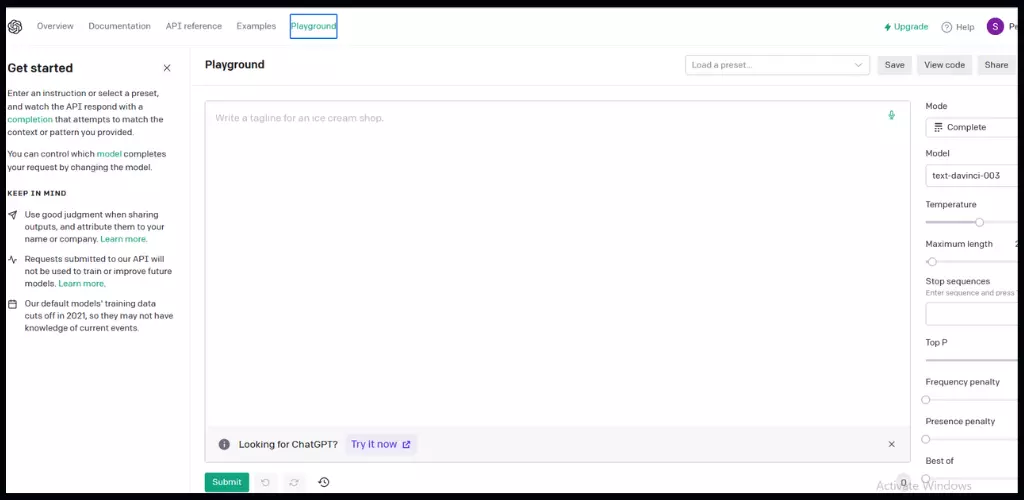
OpenAI Playground is a web-based environment where people may try out and engage with many language models, including those grounded in GPT. It offers a straightforward interface via which questions may be inputted and results seen in real-time. You may change the Playground’s temperature and set a cap on how many tokens can be produced. It’s a great resource for anybody interested in GPT who wants to learn more about the models, try out various prompts, and understand how they function.
Pros:
- A platform for interactively exploring different OpenAI models.
- It has a simple UI and an accessible API.
- Allows for varied configurations of model inputs and parameters o.
- Allows anyone to test out language model features.
Cons:
- I am restricted to using just OpenAI’s models and capabilities.
- There might be constraints on how it can be used.
- Prior experience with programming and model APIs is recommended.
- There is a possibility of sporadic performance difficulties.
13. Chai AI

Chai AI is a chatbot platform powered by AI that provides several options for enterprises and programmers. It helps you build chatbots for several purposes, including customer service, sales, and lead creation. Chai AI uses natural language processing and machine learning technologies to comprehend consumer inquiries and provide precise solutions. It has interfaces with several messaging services, which makes it simple to roll out chatbots across various mediums. Chai AI offers reporting and analytics tools to monitor chatbot efficiency and learn from user interactions.
Pros:
- Provides a user-centric, conversational AI platform.
- Offers resources for developing AI conversational interfaces, such as chatbots and virtual assistants.
- Allows for several connections and channels.
- The ability to modify and tailor the bot’s actions is a major selling point.
Cons:
- Fewer available resources and documentation in comparison to other well-known systems.
- Possible limitations in terms of high-level NLP capability.
- Usage may affect the cost of a plan and vice versa.
14. Replika
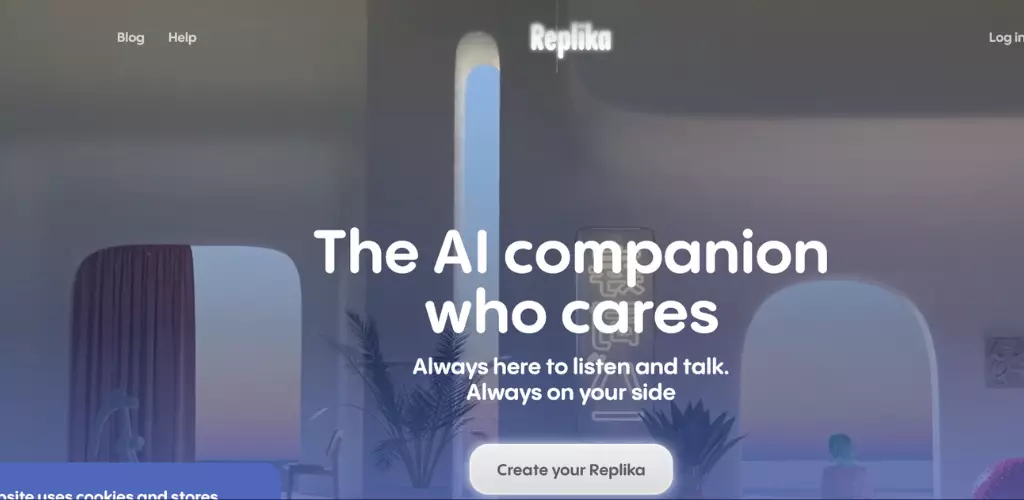
Replika is an artificially intelligent chatbot designed to comfort and converse with its consumers. Replika seeks to interact with its customers on a more personal and sympathetic level than chatbots designed to provide information or carry out certain activities.
Replika’s purpose is to serve as a digital companion that can read its users’ minds and react according to their feelings, thoughts, and worries. It uses machine learning algorithms to observe and learn from user behavior and customize its answers accordingly. For customers looking for company, introspection, or emotional support, Replika’s tailored approach makes it a great fit.
Pros:
- Emphasizes comforting others and having deep discussions.
- Over time, it figures out what users like and caters to them.
- Enables individuals to build their own AI companion.
- Accessible on several devices (PC, Mac, Linux, iOS, Android, etc.).
Cons:
- It’s possible that the results won’t be reliable or useful.
- The quality of conversations may be enhanced by user involvement and training.
- Some users may feel frustrated by the restricted and repetitive nature of the AI’s interactions.
- Uncertainty on how to handle the collecting of sensitive information.
15. Character AI
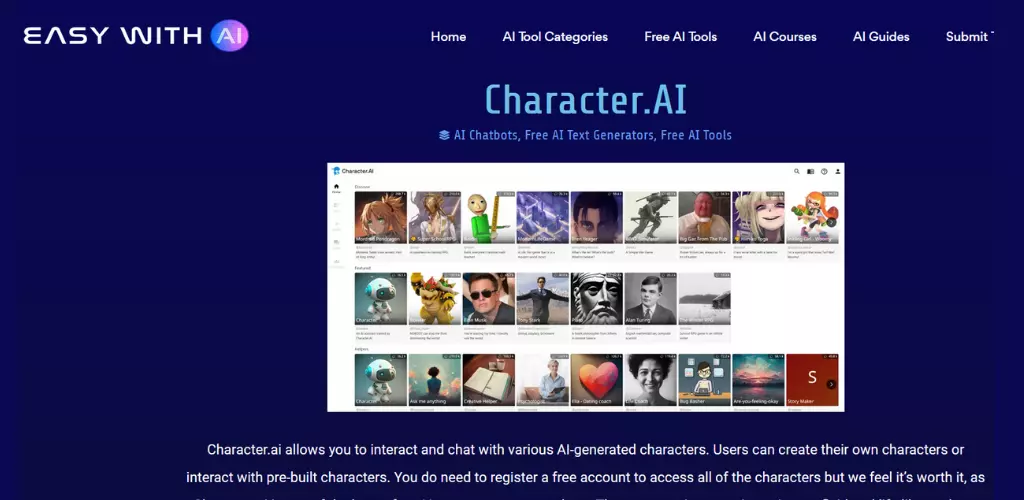
Character AI, a chatbot development platform, aims to facilitate the creation of artificially intelligent characters that may be used in narrative interactions. It’s a popular tool for adding realism and depth to stories in VR, AR, and other interactive mediums. It allows programmers to create fictitious people who behave and speak in distinctive ways. Conversations between users and AI characters may be made more lively and interesting with the use of natural language processing and machine learning, which are used in character AI. So, Character AI is a cutting-edge platform among sites like ChatGPT that focuses on user-generated content in the form of interactive stories and conversations between fictional characters.
Pros:
- It was made for conversations between characters and narratives.
- Enables users to have impromptu discussions with made-up personalities.
- It offers a fresh perspective and keeps users interested.
- Allows players to choose their own speech and character traits.
Cons:
- It is confined to dialogue and narrative revolving around preexisting characters.
- They may struggle to come up with replies that make sense and are appropriate to the situation.
- The user’s impressions may change based on the AI used for a certain character.
16. YouChat
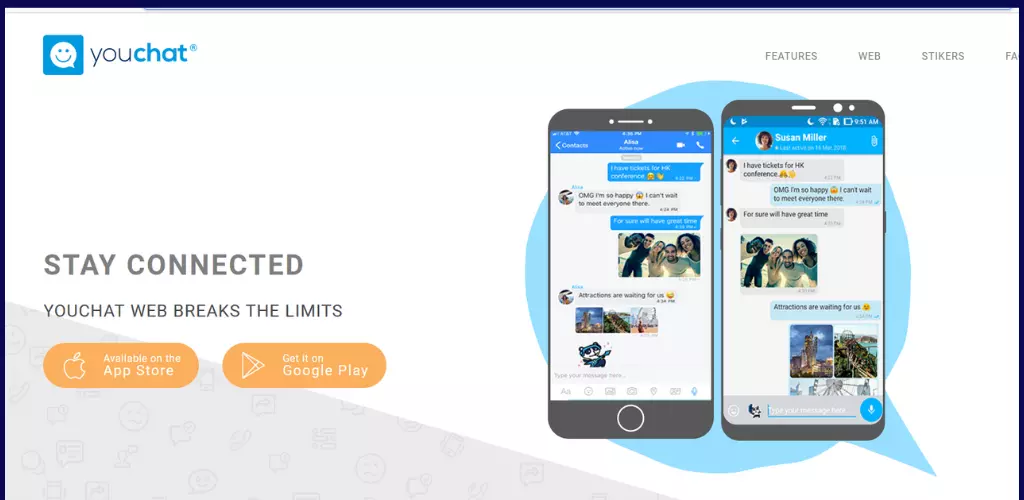
Create conversational bots for customer care and support with YouChat, a platform designed specifically for creating chatbots. It has a visual interface and a drag-and-drop builder, so users don’t need to know how to code to create chatbot chats. Natural language processing, emotion detection, and CRM connection are just some of the things YouChat offers. Businesses may use this to streamline their responses to customers’ inquiries, address common concerns, and provide individualized assistance. YouChat also has reporting and analytics tools, so you can see how well your chatbot is doing and make adjustments to increase user participation.
Pros:
- A business and customer service-oriented chatbot platform.
- Features such as automated frequently asked questions (FAQs) and live chat are available.
- Allows for connections to be made with several chat apps.
- Allows for data analysis and report generation.
Cons:
- Lower levels of adaptability and customization compared to tailor-made alternatives.
- Pricing may be capped at a certain level of use or interactions.
- A more expensive plan may be needed to access premium features.
17. Claude

Claude is a conversational marketing and lead-generation chatbot driven by artificial intelligence. It has functions including lead qualifying, information gathering, and tailor-made suggestions. Claude uses natural language comprehension and machine learning technologies to communicate with people and collect data. It may be included in your website, landing pages, and messaging channels for better lead generation and more tailored product recommendations. Using Claude, organizations can streamline their lead generation, lead qualification, and customer interaction processes. Claude is a chatbot for creative writing that provides a fresh and engaging alternative to sites like ChatGPT. It’s a great option for authors interested in experimenting with AI-powered creativity since it helps them develop narrative ideas, characters, and dialogue.
Pros:
- Conversational AI writer’s workshop and idea generator.
- Assists users in thinking up ideas for stories, personalities, and interactions.
- A unique resource for authors and storytellers.
- Provides a novel and engaging interaction for the user.
Cons:
- It can only be used for things like brainstorming and imaginative writing.
- Suggestions may not be well-thought-out or relevant all the time.
- The user experience may change according to the person’s preferred writing style.
- There may be a lack of granularity in AI training to recognize individual writing styles.
18. Quora Poe
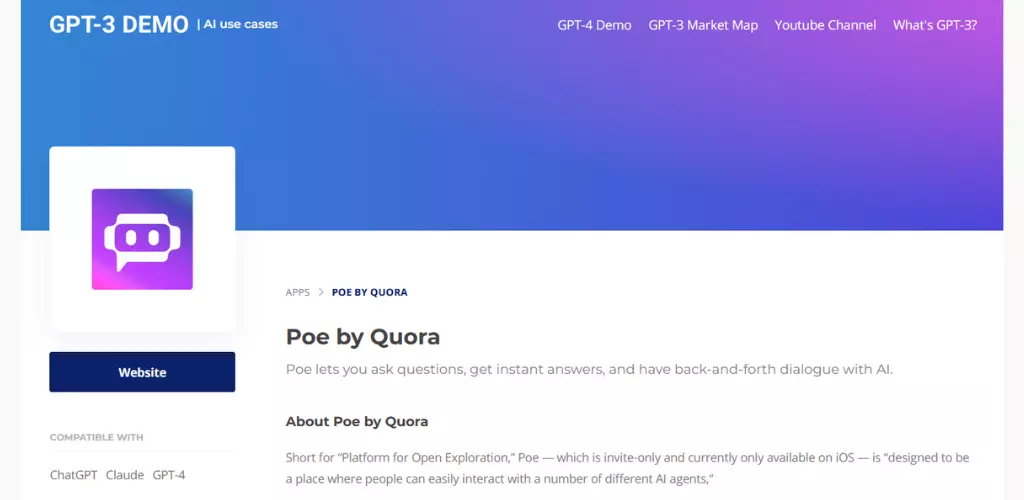
Quora, a website for asking and answering questions, has created an AI chatbot called Quora Poe. Poe aims to provide consumers with quick access to relevant answers from Quora’s extensive knowledge base and user-generated content. Poe may be used with the Quora platform or integrated into other apps for user interaction. Poe uses NLP and ML techniques to interpret user searches and provide accurate results. It’s designed to seem more like a conversation, so users can strike up dialogues with others and learn from the collective wisdom of the Quora community.
Pros:
- A chatbot is driven by artificial intelligence that takes its cues from Edgar Allan Poe.
- Provides a fresh perspective on the art of dialogue.
- Gives answers and commentary in Poe’s literary manner.
- Appropriate for those curious about fiction is written by computers.
Cons:
- Only Edgar Allan Poe-esque comments will be accepted.
- It’s possible you won’t get answers that make sense.
- Everyone has different tastes, so your mileage may vary.
- There may be certain barriers to coming up with replies that fit the situation that isn’t in Poe’s style.
19. Dialogflow
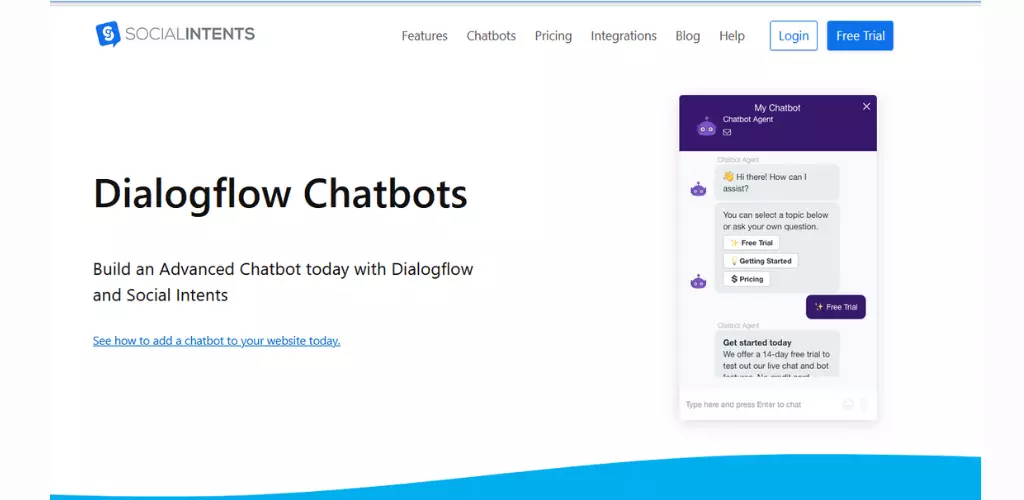
Google Cloud’s Dialogflow is a powerful platform for building AI-enabled chatbots and virtual assistants. With its intuitive UI and robust features, Dialogflow makes creating chatbots much easier. Dialogflow’s ability to comprehend and reply to user questions in natural language is a major selling point. Entity identification, multilingual support, and compatibility with various platforms are just a few of the features it provides.
Pros:
- Strong ability in recognizing and processing natural language.
- Complete and seamless compatibility with Google Cloud.
- Adaptable to many distribution channels, including the web, mobile, and messaging applications.
- A straightforward environment in which to plan out the course of a discussion.
Cons:
- Additional fees may apply, and the pricing structure might be difficult to understand.
- Knowing how to code might be necessary to use more complex features.
- There aren’t a lot of ways to tweak AI models to perfection.
- A lot of work is required to master sophisticated implementations.
20. Botpress
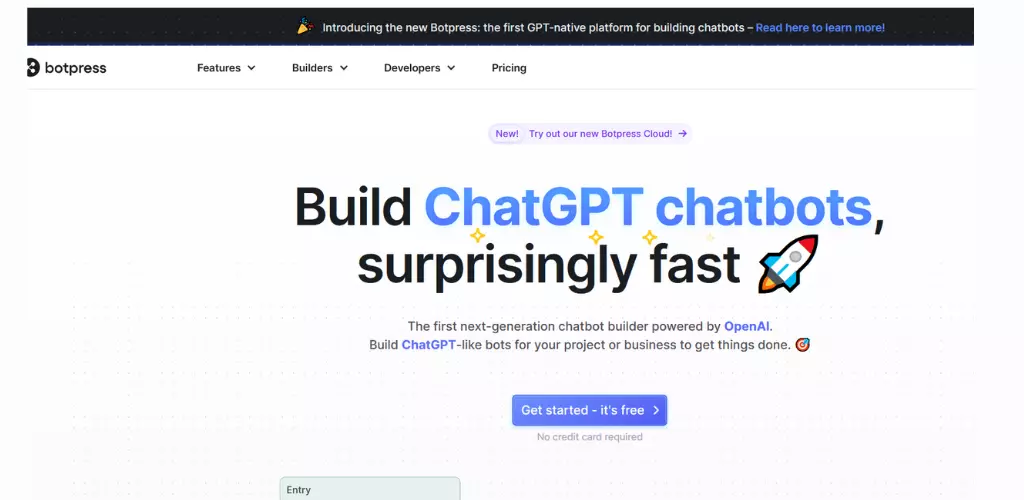
Botpress is a free and open-source platform for creating, deploying, and managing chatbots and other conversational artificial intelligence applications. It provides a malleable and adaptable framework for building sophisticated chatbots.
Companies looking for sites like ChatGPT that provide adaptable and feature-rich platforms for creating AI-powered chatbots will find Botpress an excellent choice.
Developers may create conversational flows thanks to Botpress’ visual flow editor. Deploying chatbots across channels is easy since it integrates with widely used messaging services. Botpress’s modular design makes it easy for programmers to add new features and alter the chatbot’s appearance to meet individual needs. It’s a full-featured chatbot creation platform supporting analytics, natural language understanding, and third-party service connections.
Pros:
- Highly flexible, open-source chatbot framework.
- Provides a graphical interface for creating natural-sounding conversational flows.
- Compatible with a wide range of messaging services.
- Sophisticated options, such as user authentication and database connection, are available.
Cons:
- Technical knowledge is needed for setup and customization.
- When compared to commercial platforms, government backing is scarce.
- Some of the paperwork can be old or missing pieces.
- Updates and problem fixes may be crowd-sourced.
Frequently Asked Questions (FAQs)
What is an alternative to ChatGPT?
OpenAI also provides ChatGPT Plus, a paid tier that gives subscribers access to the service around the clock, guarantees a quicker response time, and grants early access to any new features or upgrades made to ChatGPT.
Which AI has no restrictions?
Artificial intelligence that can be used and expanded upon in any way without limits is rare. ChatGPT, like other AI models, limits how it should be used to prevent unethical or irresponsible use.
Can I use ChatGPT for free?
ChatGPT is available at no cost. However, OpenAI has launched a paid tier called ChatGPT Plus that adds additional features and advantages. There is currently no cost to use ChatGPT, albeit there may be restrictions at high periods.
Is there any AI like ChatGPT?
In addition to ChatGPT, other AI models and platforms, including Microsoft’s DialoGPT, Facebook’s Blender, and Rasa Open Source, have comparable conversational capabilities. These variants’ characteristics and benefits may be exclusive to them.
Is Chatsonic better than ChatGPT?
“Chatsonic” isn’t a well-known AI model or platform; comparing it to ChatGPT is tricky. The efficiency of AI models may range widely across different contexts and assessment criteria.
Is Bing AI Free?
Microsoft’s Bing search engine now has AI enhancements thanks to Bing AI. Some Bing features may be free, while more sophisticated AI-driven services or APIs may be paid upgrades or part of Microsoft’s commercial products.
How to use ChatGPT-4 for free?
OpenAI regularly updates its language models, such as the recently released ChatGPT-4. ChatGPT-4 might be used without cost; however, doing so would be contingent on OpenAI’s price and access regulations, which are subject to change. If you’re looking for the most recent information, OpenAI’s official website or manual is the best place to go.
What is Google’s Equivalent of ChatGPT?
The Google product that is most comparable to ChatGPT is called Dialogflow. Dialogflow allows developers to build chatbots and other conversational agents using artificial intelligence.
What is the best free AI Chatbot?
Free AI chatbots come in various forms, each with its advantages and disadvantages. Which option is ideal for you is conditional on your needs and use scenario. IBM Watson Assistant, the Microsoft Bot Framework, and Chatfuel are just a few examples of well-known AI chatbots that are also free.
What is the free alternative to ChatGPT?
Although OpenAI has not officially announced a free substitute for ChatGPT, they provide limited free access to the service. ChatGPT Plus, a paid upgrade, is now available for anyone interested in a more deluxe chat experience.
Is Jasper Chat free?
It would seem that “Jasper Chat” is not a widely used AI framework or paradigm. Without further information, it’s hard to give cost or availability specifics for what may be a unique installation or customization of an AI chatbot.
Will ChatGPT-3 be free?
OpenAI sets the price and availability of ChatGPT-3 and all other versions of ChatGPT. For the most up-to-date price and availability information, it is best to consult OpenAI’s official literature or announcements.
Conclusion
The fast development of AI-driven conversational agents has resulted in a plethora of ChatGPT alternative websites by 2023. These sites, like ChatGPT, provide a wide variety of functions and features to meet the requirements of different people. As the market becomes more competitive, consumers have access to a plethora of powerful and flexible options that will likely affect the future of online communication.
Sources
- Lele, A., & Lele, A. (2019). “Artificial intelligence (AI)” Disruptive technologies for the militaries and security https://link.springer.com/chapter/10.1007/978-981-13-3384-2_8
- Dahiya, M. (2017). “A tool of conversation: Chatbot.” International Journal of Computer Sciences and Engineering https://www.researchgate.net/profile/Menal-Dahiya/publication/321864990_A_Tool_of_Conversation_Chatbot/links/5a360b02aca27247eddea031/A-Tool-of-Conversation-Chatbot.pdf
- Surameery, N. M. S., & Shakor, M. Y. (2023). “Use chat gpt to solve programming bugs” International Journal of Information Technology & Computer Engineering (IJITC) http://journal.hmjournals.com/index.php/IJITC/article/view/1679
- Vincent, J. (2020). “OpenAI’s latest breakthrough is astonishingly powerful, but still fighting its flaws.” The Verge https://fully-human.org/wp-content/uploads/2020/10/Vincent_OpenAI-latest-breakthrough-is-astonishingly-powerful-but-still-fighting-its-flaws.pdf
- Alberts, I. L., Mercolli, L., Pyka, T., Prenosil, G., Shi, K., Rominger, A., & Afshar-Oromieh, A. (2023). “Large language models (LLM) and ChatGPT: what will the impact on nuclear medicine be?.” European journal of nuclear medicine and molecular imaging https://link.springer.com/article/10.1007/s00259-023-06172-w
- Transformer, C. G. P. T., & Zhavoronkov, A. (2022). “Rapamycin in the context of Pascal’s Wager: generative pre-trained transformer perspective” Oncoscience https://www.ncbi.nlm.nih.gov/pmc/articles/PMC9796173/
- Kouba, J. (2009). “Testing of global pressure/temperature (GPT) model and global mapping function (GMF) in GPS analyses.” Journal of Geodesy https://link.springer.com/article/10.1007/s00190-008-0229-6
- Hagendorff, T., Fabi, S., & Kosinski, M. (2022). “Machine intuition: Uncovering human-like intuitive decision-making in GPT-3.5.” arXiv preprint arXiv https://arxiv.org/abs/2212.05206
- Sanderson, K. (2023). “GPT-4 is here: what scientists think.” Nature http://www.hajim.rochester.edu/che/assets/pdf/gpt-4-is-here-what-scientists-think.pdf
- Cunningham, P., Cord, M., & Delany, S. J. (2008). “Supervised learning” Machine learning techniques for multimedia: case studies on organization and retrieval https://link.springer.com/chapter/10.1007/978-3-540-75171-7_2
- Kaelbling, L. P., Littman, M. L., & Moore, A. W. (1996). “Reinforcement learning: A survey.” Journal of artificial intelligence research https://www.jair.org/index.php/jair/article/view/10166
- Reiswich, A., & Haag, M. (2019). “Evaluation of Chatbot Prototypes for Taking the Virtual Patient's History.” IOS Press https://books.google.com.pk/books?hl=en&lr=&id=mWOmDwAAQBAJ&oi=fnd&pg=PA73&dq=prototype+chatbot&ots=jY8rJghUSx&sig=Nw6Sws-9u-pUSCpOSvFPFmsEMJQ&redir_esc=y#v=onepage&q=prototype%20chatbot&f=false
- Deepthi. B, Gupta, P., Rai, P., & Arora, H. (2022). “Assessing the Dynamics of AI Driven Technologies in Indian Banking and Financial Sector.” MDI https://journals.sagepub.com/doi/abs/10.1177/09722629221087371
- Minsky, M. (1992). “Future of AI technology.” PhilPapers https://philpapers.org/rec/MINFOA-2
- Panda, S., & Kaur, N. (2023). “Exploring the viability of ChatGPT as an alternative to traditional chatbot systems in library and information centers.” Library Hi Tech News https://www.emerald.com/insight/content/doi/10.1108/LHTN-02-2023-0032/full/html
- Chowdhary, K., & Chowdhary, K. R. (2020). “Natural language processing.” Fundamentals of artificial intelligence https://link.springer.com/chapter/10.1007/978-81-322-3972-7_19
- Koubaa, A. (2023). “GPT-4 vs. GPT-3.5: A concise showdown.” PrePrints https://www.preprints.org/manuscript/202303.0422/v1
- Shrestha, A., & Mahmood, A. (2019). “Review of deep learning algorithms and architectures.” IEEE https://ieeexplore.ieee.org/abstract/document/8694781
- Sheth, A., Yip, H. Y., Iyengar, A., & Tepper, P. (2019). “Cognitive services and intelligent chatbots: current perspectives and special issue introduction.” IEEE Internet Computing https://ieeexplore.ieee.org/abstract/document/8700320
- Sillito, J., Murphy, G. C., & De Volder, K. (2006). “Questions programmers ask during software evolution tasks” In Proceedings of the 14th ACM SIGSOFT international symposium on Foundations of software engineering https://dl.acm.org/doi/abs/10.1145/1181775.1181779

